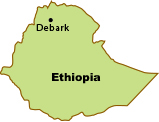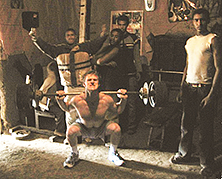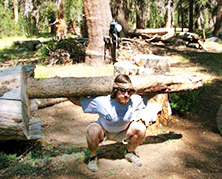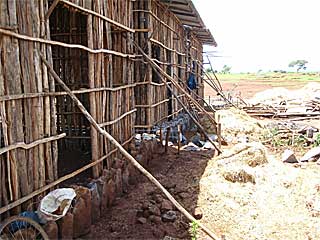Denver Sister Cities International Axum Committee “2017 Tour Ethiopia”
SPEARHEADED BY David Landes (Debre Berhan 1968–70) and Chuck Kreiman (Asella 1968–70), and with the support of Gloria Curtis (Asmara 1963-65) and Janet Lee (Emdeber 1974–76), Denver/Axum Sister Cities International is sponsoring a tour within Ethiopia from September 25 to October 9, 2017. DSCI has extended an invitation to Aurora/Adama Sister Cities International and Corvallis, OR/Gondar Sister Cities Association to participate in what surely will prove to be a great adventure.
- Travelers from throughout the U.S. will arrive in Addis Ababa and spend two days in the city.
- The group will then fly north to tour the “historic circuit” of Ethiopia for five days.
- Next the travelers have the choice of traveling to Gondar or to Adama to spend five days in the region of their choice .
- Finally, the entire group will reunite in Addis Ababa for a city tour, shopping, rest and relaxation for three days.
The Itinerary follows.
For more information contact:
David Landes, 720-238-0901 negusdawit@hotmail.com
Chuck Kreiman, 303-770-2827 axumchair@denversistercities.org
. . . . . . . . .
2017 TOUR ETHIOPIA
WEEK 1
Itinerary for All on Tour
Monday — Sept. 25: Arrive Addis Ababa at the latest.
In’quan dehna metah and “Welcome to Ethiopia.”
- Our local tour agency, F.K. Explorer Ethiopia Travel and Tours, will be on hand to transport you to our hotel, the Jupiter International.
- The day will be free for altitude adjustment and relaxation after a long flight.
- Evening welcome dinner for everyone on the tour.
 Tuesday — Sept. 26: Ethiopia celebrates the Festival of Meskel, which commemorates the finding of the True Cross in the Fourth Century. Addis Ababa marks the holiday with a colorful parade of floats, music, and religious pageantry that culminates in the lighting of a huge bonfire, and we will take in all the festivities from a special VIP viewing stand in Meskel Square. This will be an unforgettable day!
Tuesday — Sept. 26: Ethiopia celebrates the Festival of Meskel, which commemorates the finding of the True Cross in the Fourth Century. Addis Ababa marks the holiday with a colorful parade of floats, music, and religious pageantry that culminates in the lighting of a huge bonfire, and we will take in all the festivities from a special VIP viewing stand in Meskel Square. This will be an unforgettable day!
Wednesday — Sept. 27:
- Fly to the UNESCO World Heritage Site of Lalibela,
 perhaps the most memorable stop on Ethiopia’s historical circuit. Here, 11 unique rock-hewn churches were carved into the rugged mountainsides.
perhaps the most memorable stop on Ethiopia’s historical circuit. Here, 11 unique rock-hewn churches were carved into the rugged mountainsides. - Enjoy an afternoon excursion to the first group of the 11 rock churches.
Thursday — Sept. 28:
- A Mule trip through the countryside to the ancient Asheton Maryam Monastery at an elevation of 4,000m (13,000ft), with return by car.
- In the afternoon, visit the second group of the 11 rock churches in Lalibela.
 Friday — Sept. 29:
Friday — Sept. 29:
Fly to Axum, the epicenter of Ethiopian Christianity. Afternoon visit to the Obelisk Park. The seven granite stelae, the tallest rising to 108 ft., mark the royal cemetery where the tombs of kings are still being excavated. The stelae imitate multi-storied palaces and are decorated with carved doors, windows and beams.
- Visit the excavations and explore the tombs.
Saturday — Sept. 30:
- Visit Yeha, the 2,500 year-old ruins of a Sabaean city. The 40 ft. high stone temple, which now encloses a church, is inscribed with Sabaean inscriptions and reliefs of ibexes. Judaic relics and historical artifacts are housed here.
- Drive back to Axum via Adwa, site of King Menelik II’s 1896 victory over the Italians that preserved Ethiopia from colonial occupation.
Sunday — Oct. 1:
- Morning tour includes Axum’s museum, widely rated as Ethiopia’s best; the outside of the chapel where the Ark of the Covenant is said to have been housed for some 3,000 years; and the 17th century Maryam Tsion Cathedral (unfortunately closed to women), the holiest church in Ethiopia.
- Sister City visits this afternoon for the Denver-Axum committee members.
- For our other tour participants, why not spend the afternoon at leisure visiting some of the local shops for exquisite locally made clothing, jewelry, and handicrafts.
. . . . . . . . .
WEEK 2
OPTION 1 — Adama Sister Cities itinerary
Monday — Oct. 2: Morning flight to Addis Ababa and drive on the new four lane toll highway to Adama (formerly know as Nazareth), a showplace of the nation’s transformation to modernity.
Tuesday — Oct. 3: Adama sightseeing, including visits to the Wonji Sugar Factory, the local train station of the new, Chinese-built Addis Ababa-Djibouti Railway, and the Oromo Parliament Building, symbolic of Ethiopia’s recognition of formerly ignored ethnic groups.
Wednesday — Oct. 4: A morning of Sister City visits for our Aurora-Adama Sister City committee members. Leisure time for everyone else. In the afternoon a relaxing and refreshing visit to the Sodere Hot Springs.
Thursday — Oct. 5: Adama-Lake Langano and an afternoon at leisure.
Friday — Oct. 6: Lake Langano is a popular destination for Ethiopians and international tourist alike, famousfor its variety of birds and other wildlife. Our wildlife viewing excursion will include both land visits and a boat trip on the lake itself.
. . . . . . . . .
WEEK 2
OPTION 2 — Axum – Historic Route for non-Adama Sister Cities participants
Monday — Oct. 2: Today the long but rewarding drive from Axum to Gondar, the former royal capital of Ethiopia. The drive cuts through the impressive Simien Mountains — the “Roof of Africa.” This is Ethiopia’s most mountainous region filled with spectacular scenery and gorgeous views. Hopefully we will encounter birds and game like the Gelada baboon, Walya ibex, and the Simien fox — animals found nowhere else in the world.
Tuesday — Oct. 3: Gondar is the former royal capital of the ancient kingdom of Ethiopia, embodied in the castles of the Royal Compound, which led to its name the “Camelot of Africa.” Explore the castles and visit the Debre Berhan Selassie Church.
Wednesday — Oct. 4: Today our Gondar Sister Cities committee members will visit their local counterparts. This will be a leisure day for the other participants. FK Tours will offer an optional opportunity to visit the Ethiopian Jews (“Bete Israel”), the last of a once larger community many of whom have now emigrated to Israel.
Thursday — Oct. 5: Fly to Bahir Dar on Lake Tana, source of the Blue Nile River and an area known for its island monasteries. Boat trip on Lake Tana to  visit these ancient monasteries.
visit these ancient monasteries.
Friday — Oct. 6: Excursion to the Blue Nile Falls. Great birding en route. Cross a 17th-century bridge built by artisans sent to Ethiopia from Portuguese India. Return across the Blue Nile River by tankwa, a traditional Ethiopian reed boat. After lunch, a guided visit of Bahir Dar town.
. . . . . . . . .
Final 3 days
The two groups reunite
Saturday — Oct. 7:
- Return to Addis Ababa from either Bahir Dar or Lake Langano.
- For the afternoon our F.K. hosts will offer a program of optional sightseeing activities, including a visit to the sprawling Merkato — the largest open air market in Africa.
- This evening enjoy a traditional Ethiopian dinner followed by colorful folkloric singing and dancing highlighting Ethiopia’s cultural diversity.
Sunday — Oct. 8: Full day city tour of Addis Ababa: Menelik’s Mausoleum; National Archaeological Museum; a drive to Mount Entoto for a breathtaking view of the capital and a visit to Emperor Menelik II’s palace and the Entoto Mariam Church.
Monday — Oct. 9:
- A day at leisure.
- This evening transfer to the airport for departures to the U.S.
- Some of our travel companions may remain in Ethiopia for independent touring .
. . . . . . . . .
CostS
Note: Those taking the tour are responsible for arranging their own flights and paying for their travel between the U.S. and Ethiopia.
Tour participants must choose one of the in-country options. It is not possible to do both. Prices are per person based on double occupancy,
FOR THE FOLLOWING SERVICES:
- All transfers to/from airports in Ethiopia.
- Hotels including all taxes and fees.
- Three meals each day (only two meals on Sept. 26 and Oct. 9).
- All ground transportation by bus.
- Expert English-speaking guides throughout the tour.
- All taxes and service charges.
- Porters’ fees, tips to waiters, drivers and guides.
- All activities named in the tour description.
- All entrance fees.
- $200 tax deductible donation to the Axum Sister City Projects Fund.
- Not Included are: Drinks, telephone calls, laundry, personal items purchased, excess baggage fees, vaccinations and medications, passport/visa fees.
— the cost for those choosing:
- OPTION 1 — Adama Sister Cities Itinerary is $2,770.00.
- OPTION 2 — Axum-Historic Route is $2,930.00.
COST FOR IN-COUNTRY AIR TRAVEL:
- $188.00 if you arrive in Ethiopia on Ethiopian Airlines.
- $544.00 if you arrive in Ethiopia on any other airline.
. . . . . . . . .
TERMS AND CONDITIONS
Payments:
- A $250.00 deposit is due at time of booking.
- The balance is due 90 days prior to departure. (June 27, 2017)
- Payments may be by personal check or credit card (with an additional 3.2% premium).
Cancellations: Tour participants are strongly advised to purchase tour cancellation insurance that covers cancellation for any reason. Cancellations received:
- 90 days or more prior to departure (June 27), $100 per person.
- 89–60 days (July 27): 25% of the tour price;
- 59-45 days (August 11): 50% of the tour price;
- 44–31 days (August 25): 75% of the tour price;
- 30 days or less: 100% of the tour price.
Travel Insurance: Medical facilities are very limited. Tour participants are urged to purchase travel insurance that covers medical and hospital expense and also includes medical evacuation when necessary.
Single passengers: Single passengers can be accommodated with payment of an additional $400.00 single supplement. Please phone for details.
Extra nights in Addis Ababa: Available before and after the tour at $79 per person (double) per night. Especially recommended for passengers arriving in Addis Ababa the morning of Sept. 24.
Air connections: Passengers are responsible for making their own way to Addis Ababa.
Tour managers are not responsible for failure to take tour flights or for missed activities.
Required Documentation: United States citizens are required to have a visa to enter Ethiopia.
Medical and passport/visa requirements: Passengers are responsible for compliance with all medical and passport/visa requirements for entering Ethiopia. Please visit the Ethiopian Embassy website for up-to-date requirements.

 I discovered the Wild Man late one night in year two of my Peace Corps service in a small town known as the gateway to the Simien Mountains — Debark. It wasn’t by accident either. I had been waking up more and more often in the middle of the night with entrepreneurial breakthroughs — both for my ongoing Peace Corps projects and for future venture ideas.
I discovered the Wild Man late one night in year two of my Peace Corps service in a small town known as the gateway to the Simien Mountains — Debark. It wasn’t by accident either. I had been waking up more and more often in the middle of the night with entrepreneurial breakthroughs — both for my ongoing Peace Corps projects and for future venture ideas.
 Dan was a backcountry wilderness ranger in Sequoia National Forest at the same time, and he had built an “all-natural” gym in the wild using trees, rocks and logs. We both agreed that our atypical workouts were not only much more fun than going to the traditional gym, but were getting us much better results.
Dan was a backcountry wilderness ranger in Sequoia National Forest at the same time, and he had built an “all-natural” gym in the wild using trees, rocks and logs. We both agreed that our atypical workouts were not only much more fun than going to the traditional gym, but were getting us much better results.

 by Thomas R. Syre (Addis 72–74)
by Thomas R. Syre (Addis 72–74)

 A Soul, will be shown on Sunday, May 16th.
A Soul, will be shown on Sunday, May 16th.

